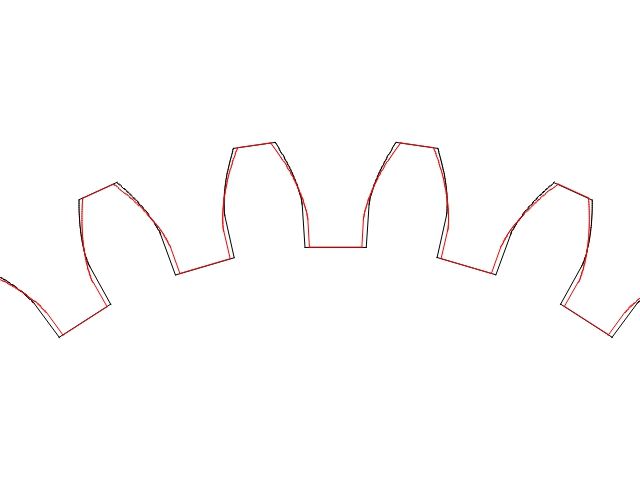Personally I'd forget pootube videos and unknown spreadsheets and go back to basics. 
The conventional way to calculate the OD of a spur gear is number of teeth plus 2 all divided by the diametral pitch (DP). Although given that the addendum (J) is one over the DP it's the same as the PCD plus 2P. In theory the dedendum (K) is also 1/P. However from a practical point of view there needs to be clearance at the bottom of the tooth for the crest of the mating tooth. The clearance is arbitrary, but is often set as 0.157/P, or pi/20 for a 1DP gear. The clearance needed varies with number of teeth and pressure angle. The "standard" total tooth depth is 2.157/P. But for small numbers of teeth it can be 2.25/P. Any proper involute cutter should have the total tooth depth engraved on it.
Backlash allowance is different to clearance, but is also arbitrary. The value of 0.04/P is an average. For minimum backlash the figure can be 0.03/P, or for a maximum it can be 0.05/P.
To get the calculated backlash you cut the spaces slightly deeper. For 14½° PA the excess depth on each gear is the same as the backlash value. For 20° PA and on both gears the value is 0.73 time the backlash.
When I first started making spur gears I spent a lot of time fannying around with gear verniers and tweaking the depth of cut. Turned out to be a waste of time, now i just cut to the calculated depth without backlash and the gears work fine.
For changewheels it's a complete waste of time mucking about with backlash calculations, as you can achieve the same effect by twiddling with the centre to centre distances. In theory gears with different PA will not mesh, but if they're sloppy enough then of course they will do so. I don't know what the PA is for Boxford gears, but I'd guess 14½°. I suspect that the tumbler gears are 20° PA to avoid undercutting on relatively small gears. The need for undercutting is dependent upon PA and gets less as the PA gets bigger. There is a formula for it, which I can't remember, but I think for 20° gears under about 12/13 teeth may need undercutting.
To summarise: forget backlash and overcutting on depth, cut to calculated depth and the gears will work fine.
Andrew
Howard Lewis.





